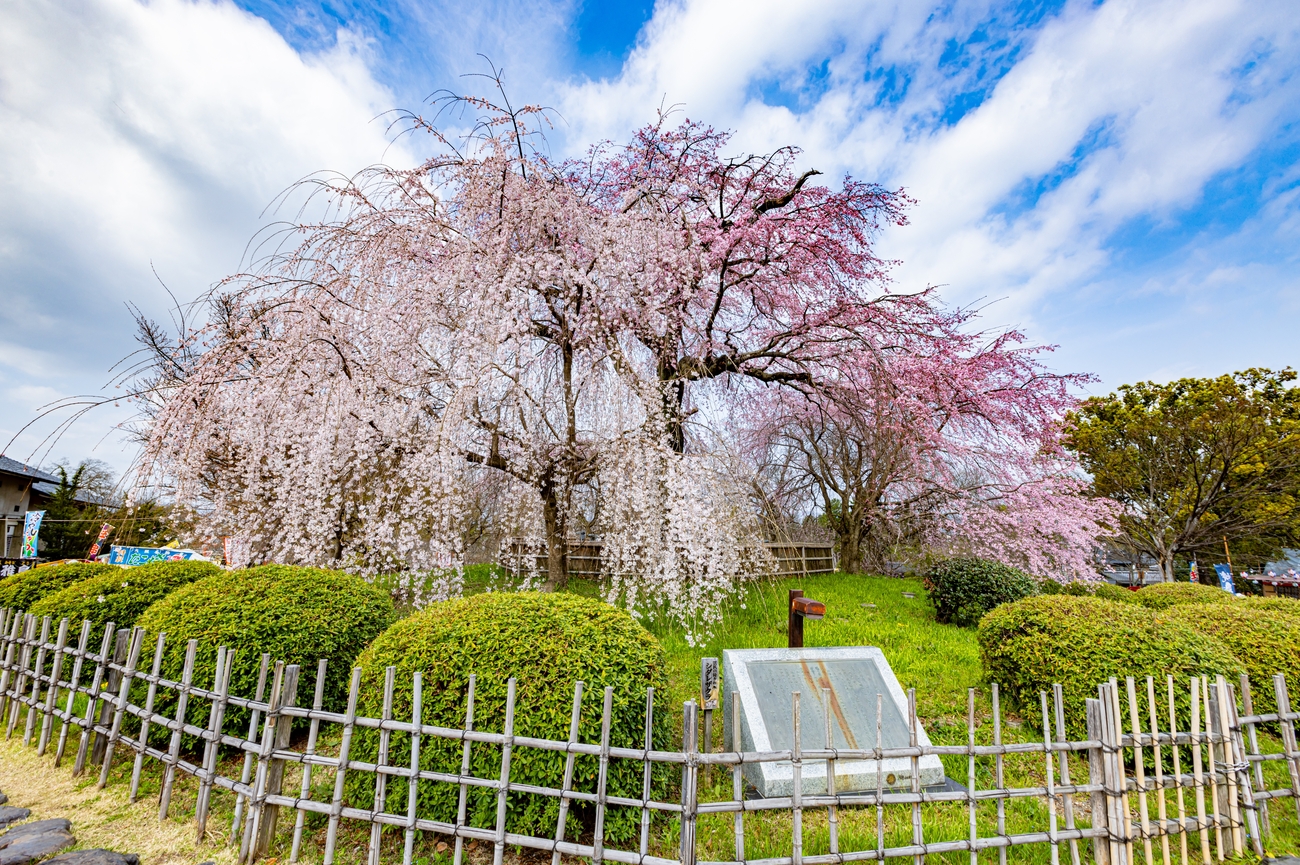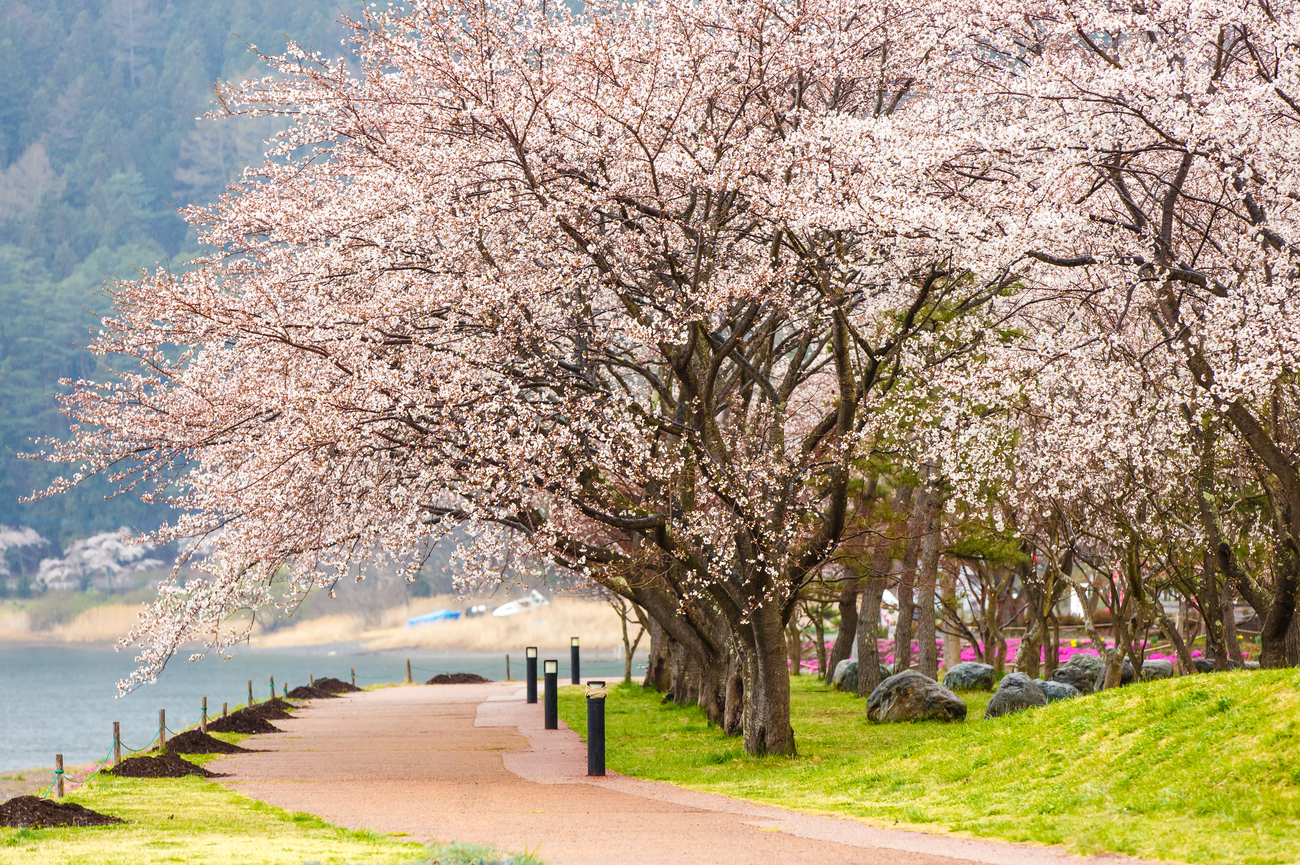What Is Hanami?

Understanding Japan’s Cherry Blossom Tradition
If you’ve ever paused on a photo of Japan in spring, it was probably because of those clouds of pink blossoms. That fleeting scene is called hanami, literally “flower viewing,” though in truth, it’s much more than that. For centuries, people have gathered beneath the trees to eat, laugh, and simply be together as petals drift through the air.
At its core, hanami is an act of being present. It’s about noticing how quickly beauty comes and goes, and how precious each moment feels because of it. The tradition began over a thousand years ago, when courtiers in Kyoto wrote poetry under the blooms. Today, you’ll find families, coworkers, and travelers doing the same thing, each one pausing for a brief moment to admire something that will soon disappear.
If you’re dreaming of seeing it for yourself, our Guide to Japan’s Cherry Blossom Season covers when and where to go, with insider tips to help you experience the season the way locals do.
The Meaning of Hanami
Hanami (花見) may translate simply to “flower viewing,” but its roots reach deep into Japanese philosophy. What began as a courtly pastime during the Heian Period (794–1185) has become one of the country’s most beloved spring rituals. Back then, poets and nobles saw the blossoms as reflections of love, change, and impermanence. The feeling behind that hasn’t changed.
At the heart of hanami is mono no aware, a quiet awareness that beauty never lasts, and that its impermanence is what makes it so moving. The cherry blossoms embody that idea perfectly. They appear in a burst of color, linger for only a few days, and scatter with the next wind. That passing beauty reminds everyone to pay attention while it’s here.
Scholar Motoori Norinaga once described mono no aware as “the pathos of things,” a sensitivity to how time moves. You feel it when petals fall, when laughter fades, when seasons shift. Hanami captures that feeling. An awareness that nothing stays, yet everything returns.
A Brief History of Cherry Blossom Viewing
The story of hanami unfolds over more than a millennium.
- During the Heian Era (794–1185), it was an affair of the aristocracy. The elite wrote poetry beneath the trees, their gatherings filled with song, sake, and reflection on life’s impermanence.
- By the Edo Period (1603–1868), cherry trees had been planted across the country by decree of the shogunate, which opened the experience to ordinary people. Parks like Ueno in Tokyo became places of celebration. People started to flock and the spaces were filled with laughter as they savored the sight of pink canopies overhead.
- As Japan modernized in the Meiji Era (1868–1912), hanami became a national celebration. Railways made travel easier, cities built parks for the viewing of the coveted cherry blossoms in full bloom, and the tradition grew into something that united everyone.
Each petal that falls today carries that shared past. Hanami remains what it has always been: a quiet festival of togetherness.
Hanami Today
Modern hanami is equal parts nostalgia and joy. In March and April, parks across Japan fill with families, students, and travelers, all chasing the season’s briefest beauty.
Under the trees, picnics often take place. People lay out blue mats, prepare colorful bento boxes, and enjoy the view with the sound of corks popping open. Food stalls line the park paths, serving grilled yakitori and sakura mochi. When night comes, lanterns light up the branches, creating yozakura, the night blossoms that glow against the dark sky.
Even in the busiest cities, the season feels intimate. Office workers share sake after hours, couples stroll along rivers, and cafés roll out pink-themed desserts for a few short weeks. Despite the crowds, there’s an unspoken courtesy. People share space, clean up after themselves, and move quietly through the parks. Everyone seems to understand: the blossoms aren’t just to be seen, they’re to be respected.
If you want to see it firsthand, our Japan Cherry Blossom Tour brings you to the most beautiful hanami spots, guided by locals who grew up with the tradition.
The Best Hanami Experiences by Region
Cherry blossoms don’t bloom all at once. They move northward like a wave, from Kyushu in late March to Hokkaido by early May, which is a natural flow that lets you follow spring across Japan.
- In Tokyo, the season starts early. Ueno Park’s thousand trees surround ponds and temples, while Chidorigafuchi’s moat glimmers with reflections of pink petals. At night, the Meguro River lights up with lanterns that make the blossoms shimmer above the water.
- In Kyoto, hanami feels almost spiritual. Maruyama Park’s ancient weeping cherry draws crowds year after year, and the Philosopher’s Path offers quiet moments beside the canal, lined with hundreds of trees.
- In Osaka, the grounds around Osaka Castle erupt into color, with street food vendors filling the air with the scent of grilled skewers and festival snacks.
- For something gentler, Kanazawa’s Kenrokuen Garden, one of Japan’s most famous landscapes—frames the blossoms with bridges and teahouses that seem made for them.
- And in Hokkaido, the season’s final act unfolds. Goryokaku Fort and Matsumae Park bloom in late April, giving travelers one last chance to sit beneath the blossoms before spring fades away.
Want a deeper look at these iconic spots? Explore our guide to the Best Places to See Cherry Blossoms in Japan and plan the perfect route for your hanami adventure.
Food and Drinks that Define Hanami
A hanami picnic is never just a picnic. It’s a table laid under petals, filled with food that feels as joyful as the view.
- Hanami bento often comes packed with small, careful touches—rolled omelets, pickled vegetables, a shrimp or two, and rice pressed with sakura shapes. Every color feels intentional.
- Sakura mochi adds a soft, floral sweetness. The rice cake is tinted pink and wrapped in a salted cherry leaf that gives a hint of surprise in every bite.
- Dango sits nearby, three little rice balls on a stick, chewy and comforting. They’re the kind of snack that disappears before you notice.
- Around parks, the air smells like yakitori and okonomiyaki, the smoke curling through the trees. Food stalls serve them hot, loud, and fast—the energy of spring in motion.
- Someone always brings taiyaki, those golden fish-shaped cakes filled with red bean or custard. They taste best while still warm, usually shared between friends.
- For drinks, sakura sake or a chilled cider fills small paper cups. Light, floral, easy to sip as the day drifts by.
Many picnickers now bring reusable cups and utensils, sorting their waste before they leave. Others turn it into something quietly elegant, complete with linen blankets, wooden chopsticks, a small bottle of cold sake shared at sunset.
The Deeper Symbolism Behind Sakura
Cherry blossoms in Japan is its own language. They appear for only a short time, yet they fill the country with color and quiet emotion. The trees bloom, scatter, and return again, a soft reminder that nothing lasts forever, and that’s what makes it beautiful.
Artists have painted them. Poets have written about them. Lovers have met and parted beneath them. Even now, the same petals drift through anime scenes and song lyrics, carrying stories of hope and goodbye.
Long ago, samurai looked to the blossoms as mirrors of their own lives: brilliant, brief, and bound by honor. That idea never faded. It shaped how Japan sees strength, grace, and renewal. The sakura still stands for all of it.
Hanami Beyond Japan
The spirit of hanami has found homes around the world. What began in Japan as a moment of quiet reflection now blooms across continents. This celebration alone invites and draws people everywhere to just pause and look up.
- United States (Washington, D.C.): In 1912, Japan gifted over 3,000 cherry trees to the U.S. capital. Each spring, the Tidal Basin turns soft pink and drawn millions to walk, picnic, admire, and watch the petals drift across the water.
- Canada (Vancouver): The city’s mild spring brings weeks of blossoms, celebrated through concerts, open-air markets, and picnics in Queen Elizabeth Park. The festival blends Japanese roots with West Coast creativity.
- France (Paris): Locals gather in Parc de Sceaux and the Jardin des Plantes to sit under branches heavy with flowers. It’s become one of the city’s quietest, most beautiful spring rituals.
- South Korea (Seoul): The Yeouido Spring Flower Festival lights up the city with music, food stalls, and long walks along the Han River lined with cherry trees. It’s festive and full of life but it never loses the calm and contemplative nature of hanami.
- Australia (Cowra): In New South Wales, the Cowra Japanese Garden hosts an annual cherry blossom festival, complete with tea ceremonies and cultural performances. It’s a touch of Japan under southern skies.
Each celebration carries the same quiet message. Slow down. Look up. Let nature remind you what’s worth noticing.
A Celebration of Life in Full Bloom
Hanami is an invitation to pause. Time seems to slow down, the world feels lighter, and everything softens for a moment. The blossoms remind us that beauty doesn’t last forever, and perhaps that’s exactly why it matters so much.
If you’re dreaming of seeing the season unfold in person, plan ahead for Japan’s 2026 cherry blossom season. The most meaningful experiences happen when you travel at the beat of spring itself.
Spring, As Japan Knows It
Understanding hanami is one thing. Living it is different. It’s the sound of laughter under trees that bloom for a week. It’s the scent of grilled food mixing with spring air. It’s the way strangers share space, quietly aware that this moment won’t last.
Our Japan Cherry Blossom Tour was designed around that feeling. Every stop, every meal, every view, every stay follows the pace of the blossoms. You travel through Japan as the season unfolds, guided by locals who know when and where it happens best.
See the meaning of hanami come alive.
Explore our Japan Cherry Blossom Tour: Luxury Itinerary for Hanami Season
Frequently Asked Questions
-
What is hanami?
Hanami means flower viewing and describes the Japanese tradition of gathering under cherry blossom trees to share food, drink and time together while the blossoms are at their peak.
-
What does hanami symbolise?
Hanami reflects mono no aware, a gentle awareness that beauty and life are fleeting. The short lived cherry blossoms remind people to notice each moment while it is here.
-
How did hanami begin?
The tradition began in the Heian Period, when nobles in Kyoto wrote poetry and drank sake beneath the trees. As cherry trees spread across the country, hanami became a celebration shared by everyone.
-
How do people celebrate hanami today?
Today, families, friends, colleagues and travellers lay out mats in parks, enjoy bento and festival snacks, sip sake or soft drinks and watch petals fall. At night, lanterns often light the branches for magical yozakura viewing.
-
What foods are popular at hanami picnics?
Typical hanami treats include hanami bento, sakura mochi, skewers of dango, grilled yakitori, okonomiyaki and warm taiyaki. Drinks might range from sakura sake to chilled cider and tea.
-
Where can I find some of the best hanami spots?
In Japan, favourites include Ueno Park and Chidorigafuchi in Tokyo, Maruyama Park and the Philosopher’s Path in Kyoto, Osaka Castle Park, Kenrokuen Garden in Kanazawa and Hokkaido’s Goryokaku Fort and Matsumae Park.
-
Are there hanami style festivals outside Japan?
Yes, cities such as Washington, D.C., Vancouver, Paris, Seoul and Cowra in Australia hold cherry blossom events that invite people to walk, picnic and look up at the trees in bloom.
-
Can you help plan a luxury hanami trip?
Revigorate can design a bespoke cherry blossom journey that follows the bloom across Japan, with private guides, refined hanami picnics and hand picked hotels and ryokans close to the most beautiful trees.


Let us know what you love, where you want to go, and we’ll design a one-of-a-kind adventure you’ll never forget.
Get in touch
Miriam
Europe & Africa Expert

Romina
Europe & Africa Expert

Catiane
Europe & Africa Expert
Our offices:












